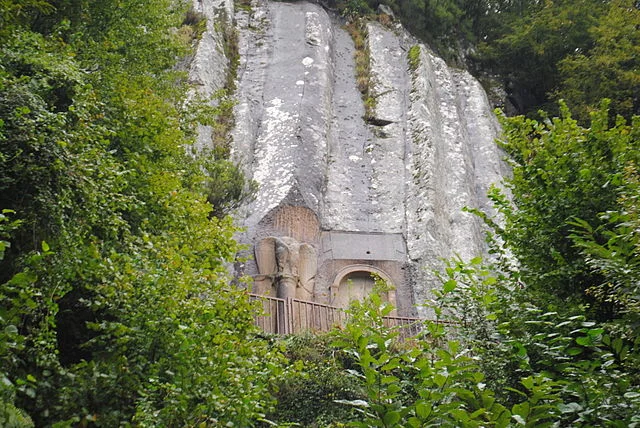The Kuşkayası Monument, located near Amasra in Turkey, stands as an extraordinary example of Roman rock-cut architecture and public commemoration. Built during the reign of Emperor Tiberius Claudius Caesar Augustus Germanicus, commonly known as Claudius, this monument dates back to the 1st century AD. It commemorates Gaius Julius Aquila, a notable Roman governor who oversaw several construction projects in the region.
Get your dose of History via Email
Historical Context and Purpose
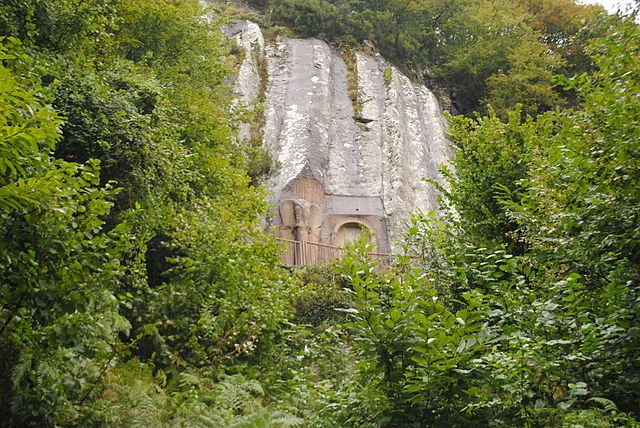
Kuşkayası, translated as “Bird Rock,” lies along a major Roman military and trade route that connected the Pontic and Bithynian regions. The monument’s position strategically highlights its purpose: to honor Roman administrative power in the area. This structure, visible to all travelers, was an assertion of the Roman Empire’s reach and authority during Claudius’s reign (AD 41–54).
Inscriptions on the monument indicate its dedication to the emperor and the governor, Gaius Julius Aquila. Claudius’s rule marked the expansion and strengthening of Roman provinces, especially in the Black Sea regions. Aquila’s role in this territory was significant, and the Kuşkayası Monument immortalizes his contributions to local governance and infrastructure.
Architectural Design and Features
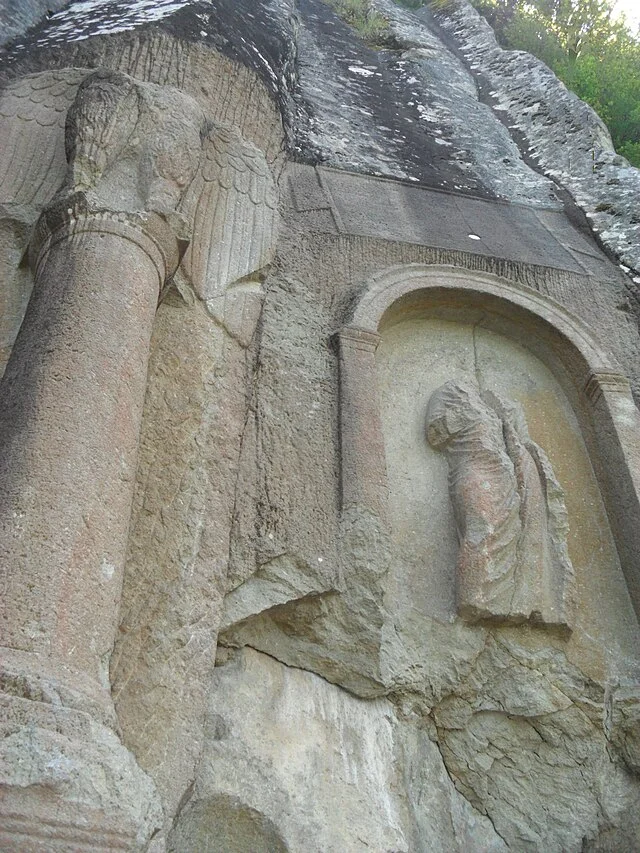
The Kuşkayası Monument is carved directly into the limestone rock face, a style commonly seen in Roman architecture when marking important locations or officials. The monument includes two carved niches, each adorned with reliefs depicting the governor and military figures. The main feature is a prominent inscription, which identifies and honors Aquila and his achievements.
These carvings display typical Roman iconography. The governor stands in one niche, dressed in traditional Roman attire, symbolizing his authority. Adjacent to his depiction, another figure represents the Roman soldier, emphasizing the military presence that helped maintain peace and order in the region.
The inscription is in Latin, the official language of the Roman administration. It reflects the high level of literacy and organization among the Romans, highlighting their respect for law and formal record-keeping. This Latin inscription was both a memorial and a public declaration of Aquila’s leadership.
Geographic Importance of the Monument’s Location
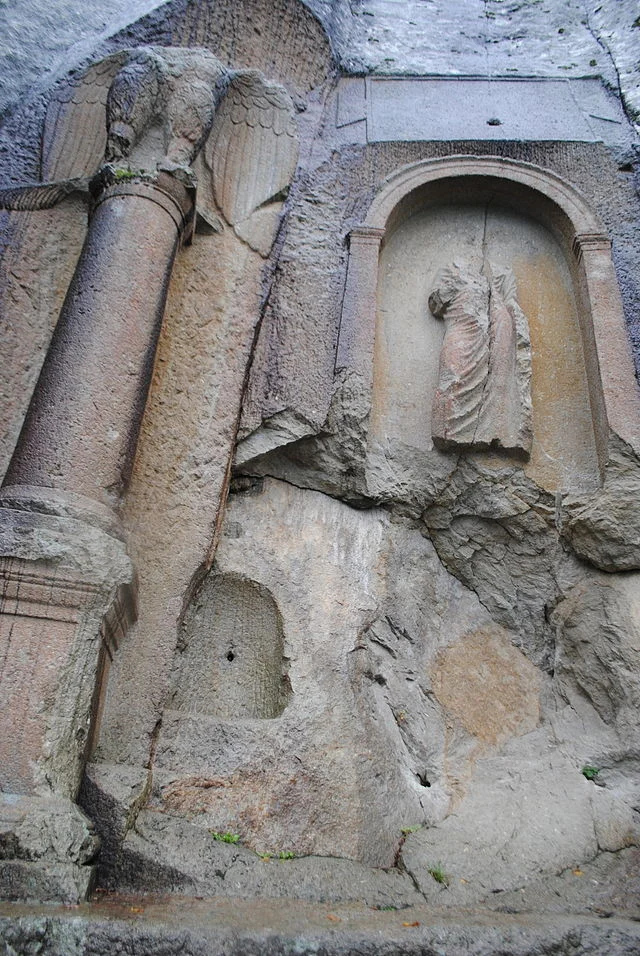
The monument’s location near Amasra is significant due to its placement along the ancient road network. This road linked Roman territories in Asia Minor, allowing efficient movement of troops and goods. Amasra, known in antiquity as Amastris, was an important port city on the Black Sea, used by Roman forces to access various regions in Pontus and Bithynia.
Its strategic placement allowed the Kuşkayası Monument to serve as a prominent visual marker for travelers and officials. The site’s visibility underscored Roman authority and reinforced the empire’s influence in Anatolia.
Conservation and Current Condition
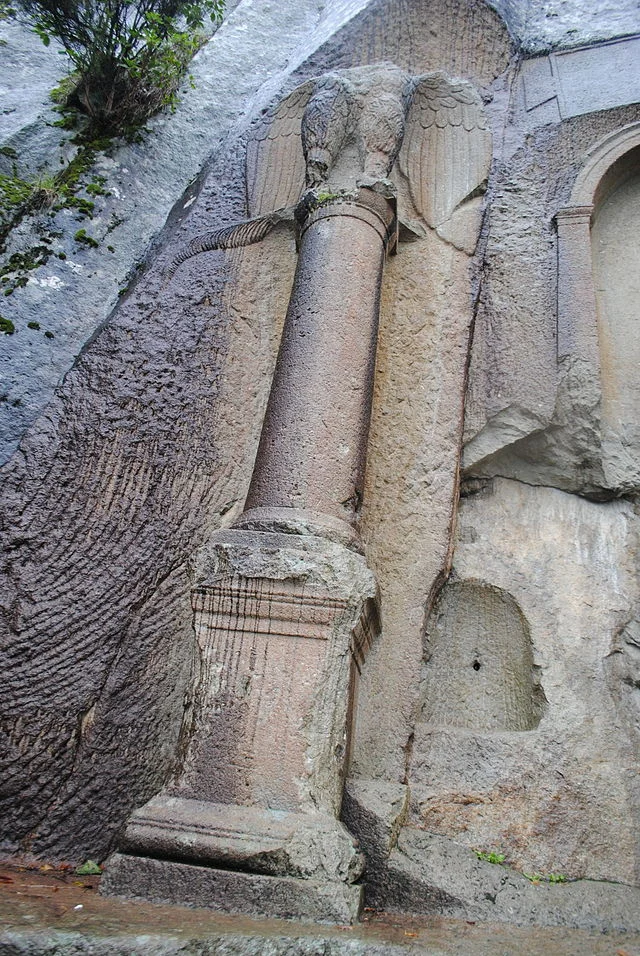
Today, the Kuşkayası Monument is partially worn due to centuries of natural erosion. However, the key features, including the figures and inscriptions, remain visible. Turkish authorities have taken steps to protect the monument, emphasizing its historical value and its representation of Roman influence in Turkey.
Visitors to the Kuşkayası Monument witness an enduring piece of Roman heritage that exemplifies the empire’s architectural skills and administrative organization. The monument is an essential part of the cultural landscape, providing insight into how Romans honored significant officials and marked their presence in distant provinces.
Conclusion
The Kuşkayası Monument stands as a testament to Roman administrative power and the empire’s efforts to maintain control over its provinces. By commemorating a high-ranking official, the monument not only marked Roman authority but also provided a lasting tribute to Gaius Julius Aquila. Its strategic location near a key route reinforced Rome’s influence in the region. Today, the Kuşkayası Monument continues to inform us about Roman provincial administration, art, and the extensive reach of the empire across ancient Anatolia.
Source:

